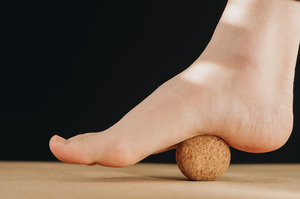Treatment for high arches focuses on relieving pain, improving stability, and preventing complications. Many people with high arches need no treatment if they are asymptomatic.
Non-Surgical Treatments
Conservative approaches are usually the first line of treatment:
- Appropriate Footwear: Choosing shoes with good cushioning, adequate width, slightly higher heels (sometimes), and good ankle support can help accommodate the foot shape and improve shock absorption.
- Orthotic Devices: Custom-molded orthotics are often key. They can help redistribute pressure away from the heel and ball of the foot, provide cushioning, improve stability, and support the foot structure.
- Padding/Cushioning: Metatarsal pads or other cushioning can relieve pressure points.
- Bracing: In cases of significant instability or foot drop (related to neurological causes), ankle braces might be recommended.
- Stretching Exercises: For tight calf muscles or plantar fascia.
- Physical Therapy: To improve strength, balance, and flexibility.
Surgical Options
Surgery is typically considered only for severe cases with significant pain, deformity, or instability that haven’t responded to extensive non-surgical treatment, or when related to a progressive neurological condition. Surgical procedures might involve tendon transfers, bone cuts (osteotomies), or joint fusions to reshape the foot, relieve pain, and improve stability. This is decided on a case-by-case basis after thorough discussion with our podiatrists at Fine Podiatry Clinic.
Constraint Check: Treatment options outlined briefly, encouraging consultation. Clinic name included.

